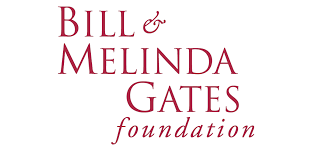Examples of current projects
Piglet Asphyxia-Inflammation Model for Neuroprotective Therapies (PAINT)
John Barks University of Michigan


The burden of disease for NE is disproportionately high in low-and mid-income countries (LMIC), particularly in Sub-Saharan Africa, where perinatal infection and inflammation are independent risk factors (Tann, CJ et. al. 2018). As Inflammation-sensitisation exacerbates brain injury in preclinical studies, we developed an LPS-sensitised hypoxia-ischaemia (IS-HI) piglet model (Martinello, KM et. al. 2019), shown to be associated with increased mortality and more severe brain injury. The safety and efficacy of HT in IS-HI remains unclear, whilst neuroprotective therapies are urgently needed in LMIC.
The Piglet Asphyxia-Inflammation Model for Neuroprotective Therapies (PAINT) study is a preclinical study funded by the Bill and Malinda Gates Foundation as part of an international drug pipeline development collaboration to evaluate the safety and efficacy of 3-5 agents which may be applicable for use in low-and mid-income countries (LMIC) for infants with NE. One agent under investigation, in collaboration with Professor John Barks at the University of Michigan is azithromycin, repurposed for neuroprotection via its immunomodulatory properties.
Key Publications:
Martinello KA, Meehan C, Avdic-Belltheus A, Lingam I, Mutshiya T, Yang Q, Akin MA, Price D, Sokolska M, Bainbridge A, Hristova M, Tachtsidis I, Tann CJ, Peebles D, Hagberg H, Wolfs TGAM, Klein N, Kramer BW, Fleiss B, Gressens P, Golay X, Robertson NJ. Hypothermia is not therapeutic in a neonatal piglet model of inflammation-sensitized hypoxia-ischemia. Pediatr Res. 2021 May 28:1–12. doi: 10.1038/s41390-021-01584-6. Epub ahead of print. PMID: 34050269; PMCID: PMC8160560.
Robertson NJ, Nakakeeto M, Hagmann C, Cowan FM, Acolet D, Iwata O, Allen E, Elbourne D, Costello A, Jacobs I. Therapeutic hypothermia for birth asphyxia in low-resource settings: a pilot randomised controlled trial. Lancet. 2008 Sep 6;372(9641):801-3. doi: 10.1016/S0140-6736(08)61329-X. PMID: 18774411.
Hassell J, Tann C, Idro R, Robertson NJ. Contribution of perinatal conditions to cerebral palsy in Uganda. Lancet Glob Health. 2018 Mar;6(3):e248-e249. doi: 10.1016/S2214-109X(18)30041-X. PMID: 29433660.
Tann CJ, Nakakeeto M, Willey BA, Sewegaba M, Webb EL, Oke I, et al. Perinatal risk factors for neonatal encephalopathy: an unmatched case-control study. Arch Dis Child Fetal Neonatal Ed. 2018;103(3):F250-F6.
Martinello KA, Meehan C, Avdic-Belltheus A, Lingam I, Ragab S, Hristova M, et al. Acute LPS sensitization and continuous infusion exacerbates hypoxic brain injury in a piglet model of neonatal encephalopathy. Sci Rep. 2019;9(1):10184.
Cally Tann
The ABAaNA study (‘Associations between Birth Asphyxia and infection amongst Newborns in Africa: perinatal risk factors for neonatal encephalopathy in Uganda’) is an unmatched case control study led by Dr Cally Tann, with the main aim of understanding the causal chain of pre-disposing factors, exposures and events, and specifically the role of common perinatal infections, in the development of NE.
Other on-going studies
- Jane Hassell
Aetiology of Cerebral Palsy in a Child Neurology clinic in Uganda.
- Kathy Burgoine
An audit of preterm infants at a hospital setting in Uganda: their delivery, gestation and postnatal outcome.
 Close
Close

